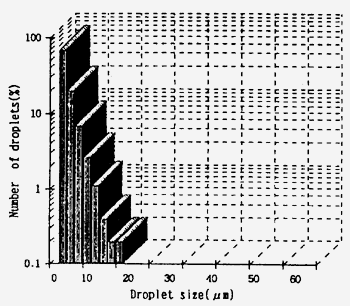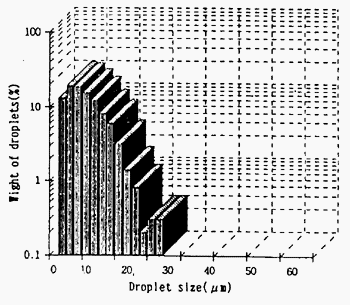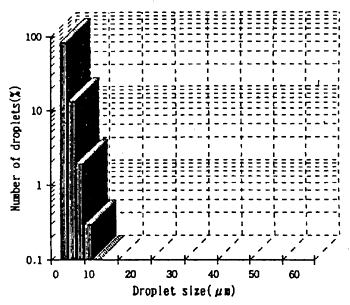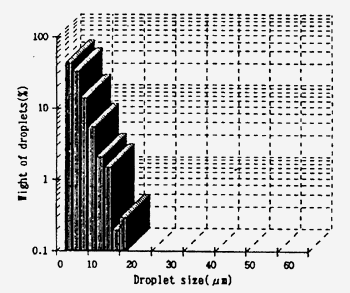Table 6b The measurement droplets size after a settling time d 20min.
(Surfactant No 2 with Solvent D )
| Droplet
size μm |
Weight distribution |
Distribution of droplet |
| % |
% |
Number |
| 0.00-2.01 |
0.0 |
0.0 |
0 |
| 2.01-4.02 |
43.0 |
84.3 |
42114 |
| 4.02-6.04 |
33.4 |
13.4 |
6721 |
| 6.04-8.05 |
14.0 |
1.6 |
945 |
| 8.05-10.0 |
5.5 |
0.3 |
171 |
| 10.0-12.0 |
2.1 |
0.1 |
33 |
| 12.0-14.1 |
1.5 |
0.0 |
14 |
| 14.1-16.1 |
0.2 |
0.0 |
1 |
| 16.1-18.1 |
0.3 |
0.0 |
1 |
| 計 |
100 |
100 |
50,000 |

Fig 5 a Relation between droplet size and the droplet number after a
settling time d 20 min. (Surfactant No.1 with Solvent D)

Fig 5b Relation between droplet size and droplet wight after a scttling
time of 20 min. (Surfactant No.1 with Solvent D )

Flg.6a Relation between droplet size and the droplet number after a
setthng dme d 20 min. (Surfactant N0.2 with Solvent D)

Fig. 6b Relation between droplet size and droplet wight after a settling
time d 20 min. (Surfactant No.1 with Solvent D )
4.2 Relation between droplet size and adherence of it
It was made clear that droplet size of dispersed oil in the water varies, larger
droplets have a marked tendency to show the Creming phenomenon to resurface faster in the
water.
The investigation of adhesiveness to. solid substratum over the various sizes of
droplets was conducted with surfactant N0.1, with solvent D and with a heavy fuel oil in
the state of 10,000cSt at 25 ℃.
A piece of acryl plate which has a relatively marked tendency to hold oil was used.
In the investigation, 50ml of sea water was added into two separatory funnels each
followed by the addition of 2 me of the oil mixed with the dispersant. The two funnels
were shaked at 300 reciprocations per minute at 40mm of amplitude for 5 minutes. One of
the funnels was allowed to settle for 5 minutes and the other for 20 minutes after the
shaking was stopped before running off 30ml of the oily water into beakers. Shortly after
the oily water was transferred
前ページ 目次へ 次ページ